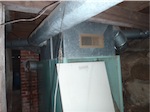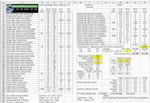Following a week in which SolarCity and then Panasonic both claimed to have achieved record efficiencies, SunPower has hit back, saying its products are “the most efficient solar panels commercially available today”.
The vertically integrated US services provider made the claim via its corporate blog. While the company did not mention either of the rival companies in the piece, it is thought to be a response to news stories emerging from the SolarCity and Panasonic camps.
SolarCity, a third party lease provider and according to GTM Research, the holder of around a third of total market share for residential installations in the US, said last Friday that its panels had achieved a 22.04% reading. The panels are also the first to be produced by SolarCity itself, with the company having previously bought in panels and other equipment for projects. SolarCity purchased module manufacturer Silevo to create its own 1GW manufacturing base, with the latest modules having come off that pilot production line.
Just days later, Japanese manufacturer Panasonic claimed that its newest commercial prototype rooftop module had a recorded efficiency of 22.5%. The Panasonic record was verified by the Japanese National Institute of Advanced Industrial Science and Technology while SolarCity’s record was verified at the Renewable Energy Test Center in the US.
However, SunPower’s blog appeared to draw the distinction between the pilot line and prototype modules unveiled by the others, by highlighting that its top of the range product, the X-Series X21 panel, has been available to customers since 2013.
Verified as the highest efficiency panel at the time of its launch by the US National Renewable Energy Laboratory (NREL), the X-Series has a listed efficiency of 21.5%. Furthermore, SunPower said, NREL had “in some cases” found that the X-Series is exceeding 22% efficiency.
SunPower went on to say in its blog that it saw the competition as “healthy” and used the opportunity to further promote X-Series.
While the differences in efficiency may seem relatively minor, especially as two have yet to reach full commercialisation, the announcements have certainly generated trade press headlines for all three companies.
- Home
- Blog
- Forum
- Green Home Topics

- »Healthy Home
- »Water Conservation
- »Energy Efficiency
- »Materials & Products
- »Resources
- Videos
- »From the Experts
- Remodeling with Passive House Approach
- How to Choose an Advanced Water Heater
- Choosing A Whole-House Ventilation System
- Selecting High Performance Windows
- Toward Zero Energy at Home - A Personal Example
- Remodel to Passive House Standards
- An Introduction to Ecological Landscaping
- Weingarten House at San Benancio - Energy
- A Deep Energy Retrofit Project
- Directory
- Events/News

- Shop
- About Us





